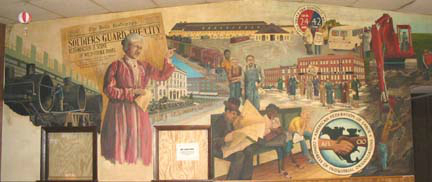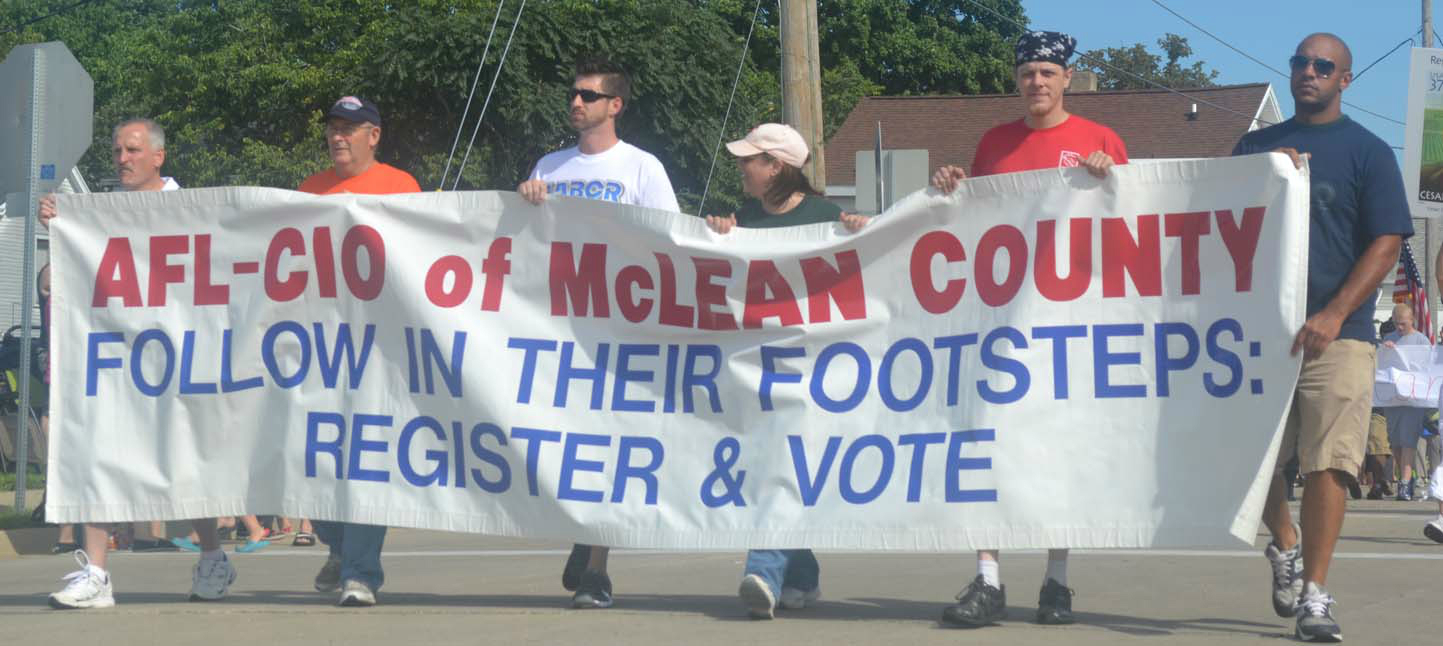|
It’s a long and tortured path from the April 18, 1836 burning alive of free African-American Francis McIntosh in downtown St. Louis to 2014’s police shooting of Michael Brown in Ferguson.
In The Broken Heart Harvard’s Walter Johnson claims that St. Louis is the epicenter of American violence – Native American extermination, racism, labor suppression, sexism and radical right wing movements.
Labor struggles permeate this book – from enslaved African-American workers fighting for their rights, the 1877 “Great Uprising” to the 1950-60s Civil Rights efforts to open employment to all.
This is a book of passion. Under the fabric of “racial capitalism,” Johnson traces the city’s history as “the capital city of the nation’s western empire” from its early French fur trappers, who created a symbiotic relationship with Native peoples, through westward expansion, the Gilded Age and the military-industrial complex. Some may challenge his framing device but his deep and provocative dive into St. Louis history highlights events that were national is scope.
Racial relations between workers were a see-saw. At times white and African-American workers cooperated for their mutual gain; at other points, the white privilege crumbs extended to white workers were used to turn them against African-Americans.
Johnson does not just dwell on outrage, but also times of racial unity and economic challenge. German immigrants, many refugees from failed revolutions against European monarchy in 1848, settled in St. Louis. The socialist “Workingman’s Party” had its largest membership in the river city. Across the country in 1877, from St. Louis to Chicago, New York, Baltimore and Pennsylvania cities was shut down by a spontaneous walk-out, workers angry over a prolonged economic recession, wage cuts and dangerous conditions. In St. Louis, the 1877 “Great Uprising” led to the nation’s first general strike, a St. Louis and East St. Louis interracial walk-out that briefly led to a socialist, workers’ government in St. Louis. Police and military action halted the strike, which had brought the city to a standstill.
Socialist action returned in the Depression 1930s, when interracial protesters, organized by the Communist Party, marched on and occupied City Hall for job and relief. On May 13, 1933, 2,500 African-American women, working as nut-pickers at R.E. Funston Company, walked out for nine days, eventually doubling their wages. In many places, the Civil Rights movement centered on access and accommodation. In St. Louis it heavily targeted employment opportunities. African-American women in 1937 picketed retailers, eventually winning clerk jobs. The nation’s longest sit-down strike unfolded on March 9, 1937, at Emerson Electric, supported across racial boundaries.
Labor and racial relations also reached a sad nadir in East St. Louis on July 2-4, 1917. As World War I escalated, African-American workers came north, looking for jobs. Many unwittingly became strike breakers. Spurred by the local labor council, the East St. Louis massacre burnt African-American homes, destroyed businesses and shot and beat people to death. A thorough tally of the dead was never achieved. Although the National Guard was mobilized, it seemed more interested in protecting white rioters than the oppressed. This shocked the nation and mobilized protest movements. On July 28, 15,000 protesters held a silent march down New York’s Fifth Avenue to protest the East St. Louis killings.
Johnson intensely scrutinizes racial zoning, housing covenants, public housing projects, urban redevelopment schemes and in East St. Louis, the establishment of company towns surrounding the municipality to evade urban property taxes. These shape his concluding chapter on Michael Brown and Ferguson, not just a momentary lapse by a police officer, but a systematic herding, abuse and farming (extracting wealth through police and zoning fines) of African-American populations.
The Broken Heart of America strikes a bold premise – that the sordid tale of American violence is reflected, and reflected most particularly, in one American urban center. Johnson roams the western plains, the St. Louis World’s Fair and its human zoo and the consolation of great fortunes into this American story’s fabric. Working people were both victims and resisters to that violence. Some may disagree with his framework; his research is thorough, the indictment compelling and well written. Johnson has assembled these myriad threads into an unsettling but necessary compilation. Violence in American is not an occasional over-reaction – in Johnson’s telling, it is a necessary component of American growth.
Book review by Mike Matejka
The Broken Heart of America: St. Louis and the Violent History of the United States, by Walter Johnson, Basic Books, 2020 ISBN: 978-0-465-064426-7
|



